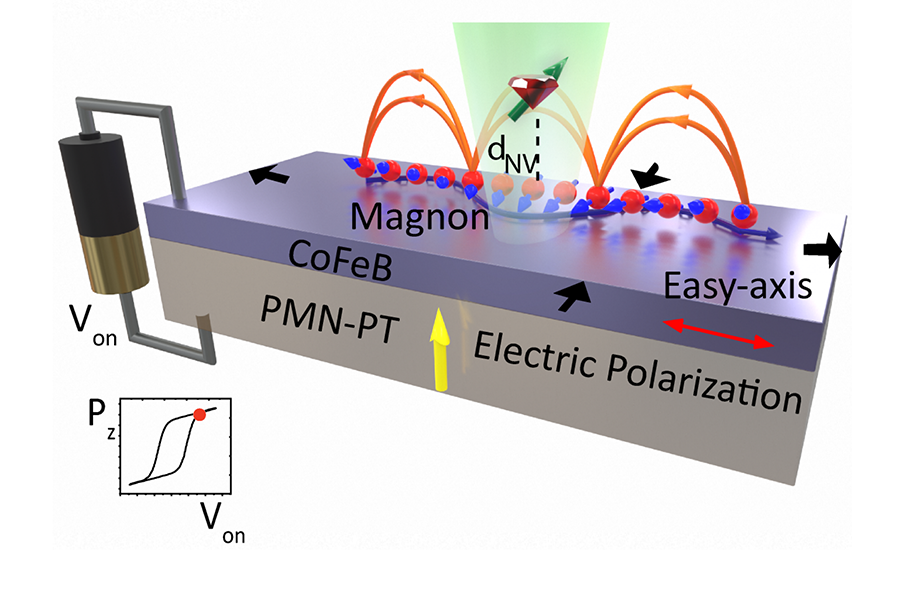Electrically reconfigurable interactions in quantum spin systems

Researchers with Purdue University’s Elmore Family School of Electrical and Computer Engineering have demonstrated a platform with electrically reconfigurable interactions between atom-like spin qubits and wave-like excitations of magnets. This could enable improved nanoscale electric field sensors and scalable quantum circuits of optically-addressable spin qubits.
Pramey Upadhyaya, assistant professor of electrical and computer engineering, says electric field control of spin interactions is crucial for the development of next-generation information processing and sensing technologies that leverage electron’s spin degrees of freedom. With the promise of adding the effects of quantum mechanics as a unique resource to such technologies, one such spin system that has attracted significant recent interest is formed by coupling optically-addressable atom-like spins with magnons (wave-like excitations in magnets). The desired knob of electric field control was however missing for such hybrid quantum spin systems.
He says this research married recent advancements made in voltage control of emerging spin-based classical memory technology with hybrid quantum systems to engineer the missing electric field control. Upadhyaya says we created a new hybrid system that integrates ferroelectric (PMN-PT) and ferromagnet (CoFeB) thin films, a leading candidate system for next-generation low-power magnetic random access memory, with atom-like spin qubits [an ensemble of Nitrogen vacancy (NV) centers in nanodiamond]. In such systems, electric field strains the PMN-PT. The strain, when transferred on to CoFeB, modifies the magnetic field emanating from the magnons, which in turn tunes the coupling between NV centers and magnons.
“We theoretically show that this demonstrated phenomena could enable nanoscale electric field sensors with more than an order of magnitude enhancement in DC electric field sensing when compared with present-day schemes utilizing single spins,” he says. “The next step is to demonstrate this experimentally.”
Abhishek Solanki, a PhD student working with Upadhyaya, Shalaev, and Chen’s group says “in addition to enabling a new class of electrically-tunable spin-based quantum devices, such as improved nanoscale electric field sensors and scalable on-chip hybrid quantum circuits of optically-addressable spin qubits, this research shows a possible pathway to use these sensors to advance new material discovery”.
In addition to Solanki and Upadhyaya, the research group includes Zhihong Chen, Professor of Electrical and Computer Engineering, Joerg Appenzeller, Barry M. and Patricia L. Epstein Professor of Electrical and Computer Engineering, Yong P. Chen, Karl Lark-Horovitz Professor of Physics and Astronomy, Vladimir M. Shalaev, Bob and Anne Burnett Distinguished Professor of Electrical and Computer Engineering, and graduate students: Mohammad M. Rahman, Wenqi Tong (Upadhyaya’s group), Tingting Shen (Appenzeller’s group), Punyashloka Debashis (Z. Chen’s group); postdoctoral scholars: Simeon I. Bogdonav (Shalaev’s group), Avinash Rustagi (Upadhyaya group); research scientist: Neil R. Dilley (the Birck Nanotechnology Center.
This work was supported by the U.S. Department of Energy (DOE), Office of Science through the Quantum Science Center (QSC), a National Quantum Information Science Research Center, and National Science Foundation (NSF).
Source: Electric field control of interaction between magnons and quantum spin defects
